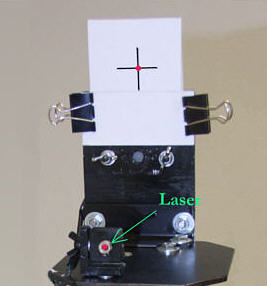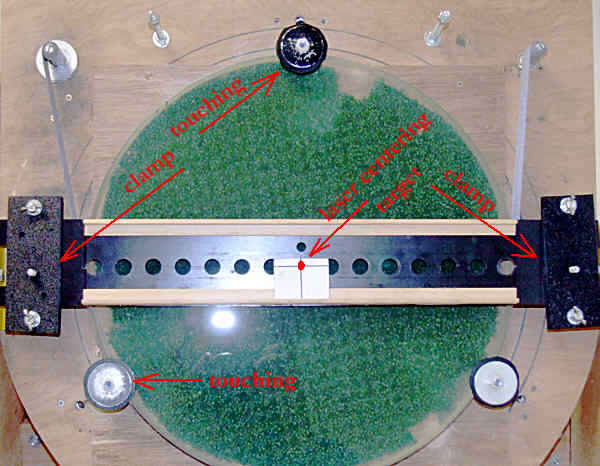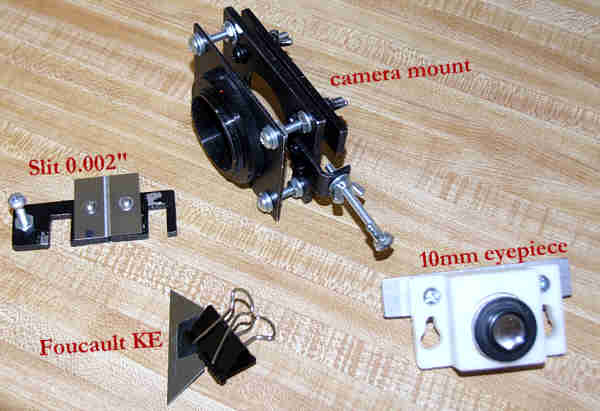Tester Overview
Initial One Time Alignment:
- Using a tripod (4x5 camera tripod works well), Align the Testers Longitudinal Axis (6 inches of travel) parallel to the optical axis.
- Without moving anything else, align the Testers Camera Mounting Plate perpendicular to the optical axis and lock it down.
- Without moving anything else, aim the Testers Alignment Laser to the center dot of the mirror and lock it down.
Subsequent Testing:
- Rotate the Tester on its tripod aiming the Alignment Laser at the center of the mirror.
- Then rotate the mirror so as to aim the reflected laser beam back to the Target Cards Aiming Spot.
- Aim the Alignment Laser to the center dot of the mirror. As a result, the Longitudinal Axis is now parallel to the optical axis and the Camera Mounting Plate is now perpendicular to the optical axis.
- Turn off the laser and turn on the Testers Diffused Led Source. Place the Knife Edge (KE) over the Source and inspect the mirror for smoothness. No more endless hunting for the mirrors reflected beam.
- Position the Tester at ROC and then move the Tester back on the Longitudinal Axis a distance as determined previously to fill the CCD with the Reflected Slit Images.
- Remove the KE and mount the Source Slits. Attach the Camera, to the Tester, and place the Mask over the mirror. Attach the eyepiece to the Tester.
- View the Reflected Slits through the eyepiece. Make small adjustments to position The Center Reflected Slit just over the gap in the Source Slits, and then take a 25 to 30 second exposer, capturing the Reflected Slit Images.
- Process Reflected Slit Images using ImageJ's Center of Mass function.
- Process ImageJ's Center of Mass results with the LIT Conic Spreadsheet, computing the Foucaults.
Elapsed time less than 30 minutes - Start to Foucaults.











